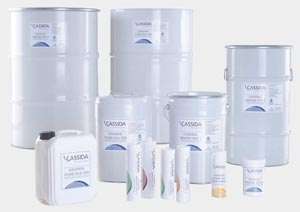after how many hours should it be changed ???
When do I need to replaced my Heat transfer oil / Thermal Oil in Industrial Heat Transfer Systems
Introduction
Thermal oil is used in industrial heat transfer systems but degrades due to high temperatures, oxidation, and contamination. This document discusses the lifespan of thermal oil, the factors influencing its degradation, industry guidelines for replacement, manufacturer recommendations, and signs indicating the need for replacement.
Lifespan and Recommended Replacement Interval
The lifespan of thermal oil varies significantly by application:
- *High-load systems (high temperatures, open systems): 4,000-6,000 operating hours, sometimes shorter with severe oxidation.
- *Well-maintained systems (e.g., bitumen storage tanks): Lifespan of 10-25 years possible.
- *Closed circuits with optimal conditions: >10-15 years.
- *General guideline: Some manufacturers recommend full replacement annually, but condition-based maintenance is more effective.
Factors Influencing Lifespan
1. *Temperature: Overheating causes thermal cracking and shortens lifespan.
2. *Oxidation: Air exposure accelerates aging, especially in open systems without inert gas coverage.
3. *Contamination: Dust, water, and process leaks speed up degradation.
4.**Oil type: Synthetic oils have a longer lifespan than mineral oils.
5. *Maintenance and operation: Proper temperature control and filtration extend lifespan.
Industry Guidelines and Best Practices
- *Oil analysis: Annual tests for viscosity, TAN (total acid number), flash point, and degradation fractions.
- *International standards: DIN 51528/51435 and ASTM D6743/D7213 for oil evaluation.
- *Preventive maintenance: Regular (partial) oil replacement prevents sudden system failures.
Signs of Degradation and Need for Replacement
- *Discoloration and sediment: Dark, cloudy oil with sludge indicates oxidation.
- *Viscosity changes: Excessively thick or thin oil suggests degradation.
- *Chemical deviations: Increase in TAN or decrease in flash point.
- *Reduced performance: Longer warm-up times, poor temperature regulation.
- *Mechanical failures: Cavitation in pumps, leaking seals, and increased pressure.
Conclusion Thermal Oil change
The replacement frequency of thermal oil depends on operating conditions. Regular analysis and maintenance extend its lifespan. Timely intervention upon detecting degradation signals prevents unsafe situations and costly downtimes. This depends on factors such as oil type, operating conditions and manufacturers' recommendations.
























 7 warehouses in Europe
7 warehouses in Europe